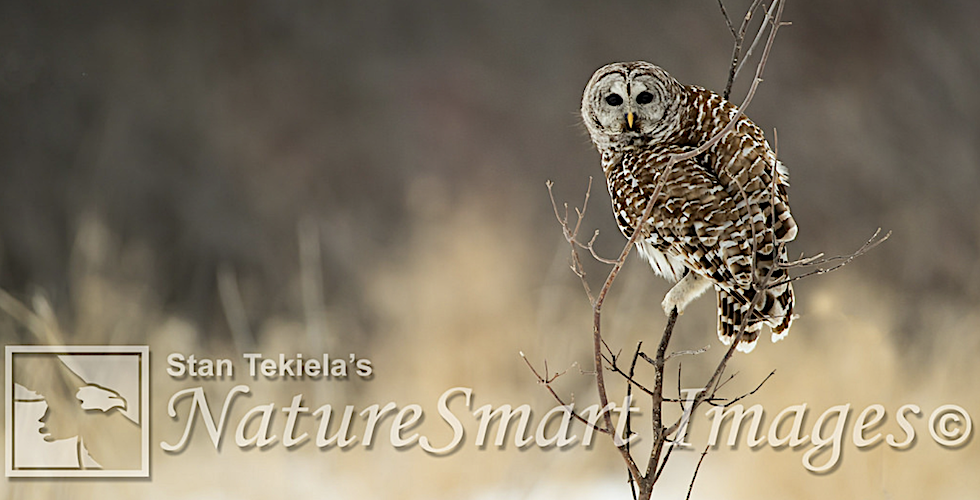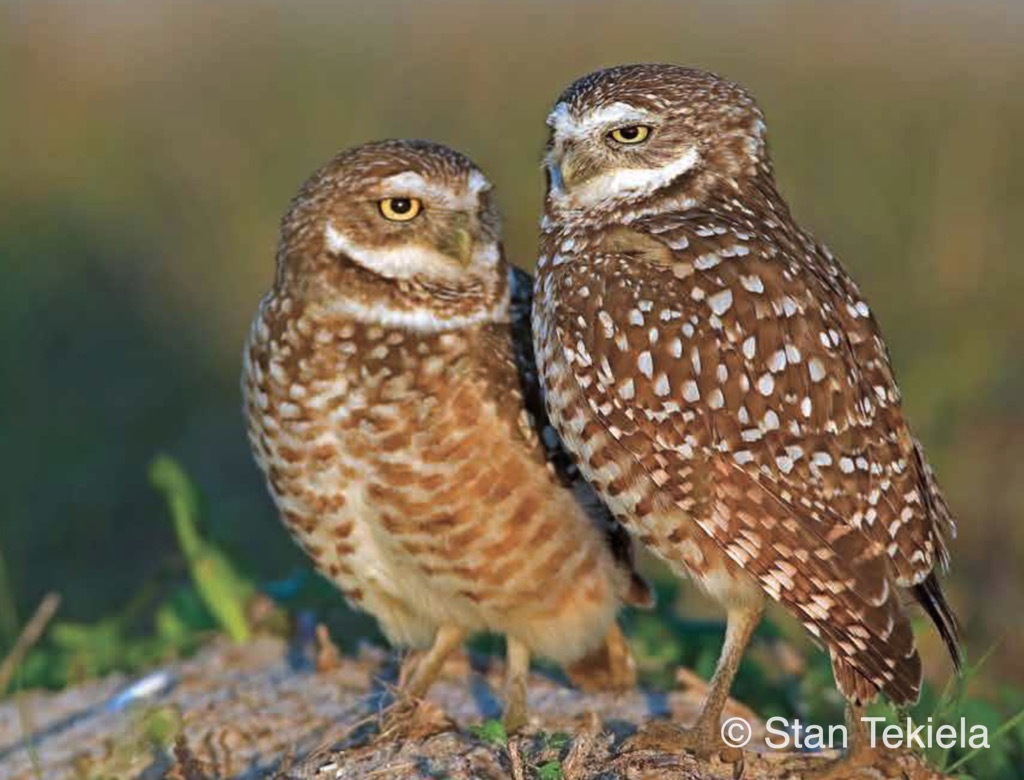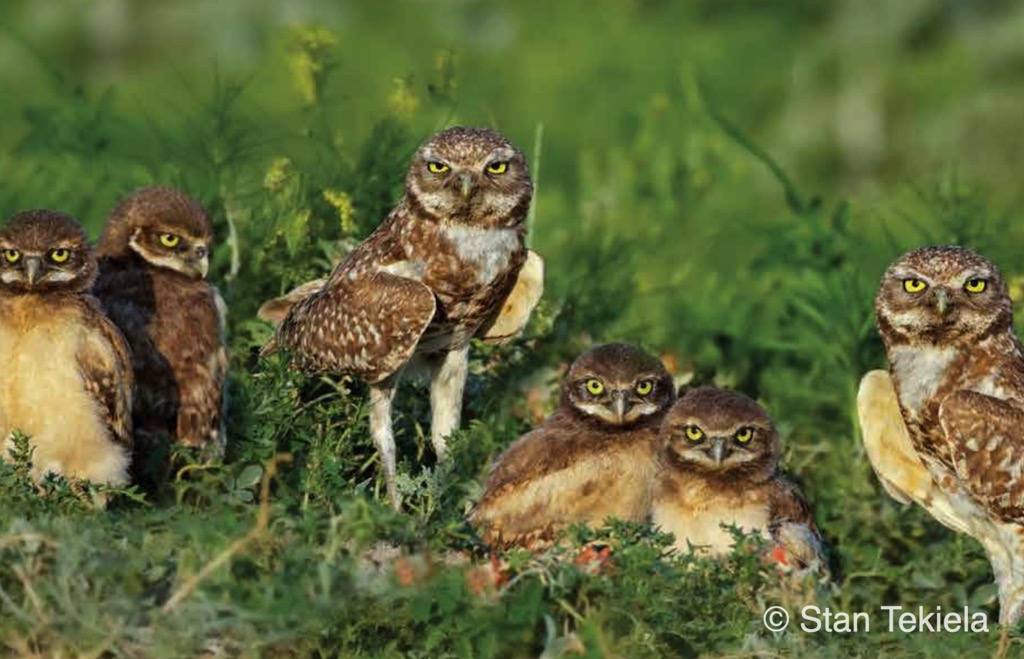
Owls Are Amazing—Stan Tekiela Tells us Why
In wildlife photographer and naturalist Stan Tekiela’s latest book, Our Love of Owls, readers will discover some amazing and fun facts about these wise birds.
Most birds have well-defined, broad shoulders; small heads; small eyes on the sides of their heads; and large bills, but owls are different. They have distinctive barrel-shaped bodies and huge, round heads with large eyes in front, and small, almost hidden, bills. Some owl species also have feather tufts on top of their heads that look like ears. With an extra vertebra in their necks, owls are able to turn their heads around much farther than other birds.

Owls have large heads for their large eyes and brains, but are they really smarter than other birds? Well, owls do have several social behaviors that are consistent with intelligence. The Barn Owl gathers in communal shelters for safety, while the Short-eared Owl hunts in flocks to find food. Some owl species communicate through a variety of social signals, including touching, vocalizing, and posturing. Owls also preen each other while making soft, reassuring sounds, both of which are also signs of elevated intelligence.
In most bird species, males are larger than females. In all owl species, however, the females are slightly or noticeably larger than the males. This phenomenon is called reversed sexual dimorphism, but the reason for it is unknown. It is thought that female owls may have adapted to increase in size, as this would have helped them keep the eggs warm. Over time, they also may have become better at defending territory during the mating season and protecting their young while the males hunted. Concurrently, the males may have become smaller and more agile, making them better hunters.

Like other birds, owls lay only one egg per day. The Barn Owl lays eggs about 48 to 72 hours apart. One by one, the eggs hatch in order, in the same amount of time in which they were laid. Chicks in clutches that do not hatch at the same time (asynchronous hatching) can be a week or more apart in age.

Interestingly, the Burrowing Owl lays seven to ten eggs in western states but produces only four to six eggs in Florida. When the eggs hatch, there is a large discrepancy in the ages of the chicks.
MORE BOOKS AND STORIES BY STAN TEKIELA
If you enjoyed Stan’s post, you may consider one of his amazing nature books: Majestic Eagles; The Lives of Wolves, Coyotes, and Foxes or Backyard Birds: Welcomed Guests at our Gardens and Feeders. Young readers will delight in his award-winning children’s books, such as Whose Butt?, Critter Litter, and his latest, Jump, Little Wood Ducks.
Other posts you might enjoy:
Indigo Bunting—A Familiar Summer Visitor
The Nesting Behaviors of Sandhill Cranes
Big Birds, Baby Birds, Birds Everywhere
Stan Tekiela observes Marsh Wrens
The Magical, Mystical World of Sandhill Cranes
For more stories about wildlife and nature, sign up for our newsletter now!


